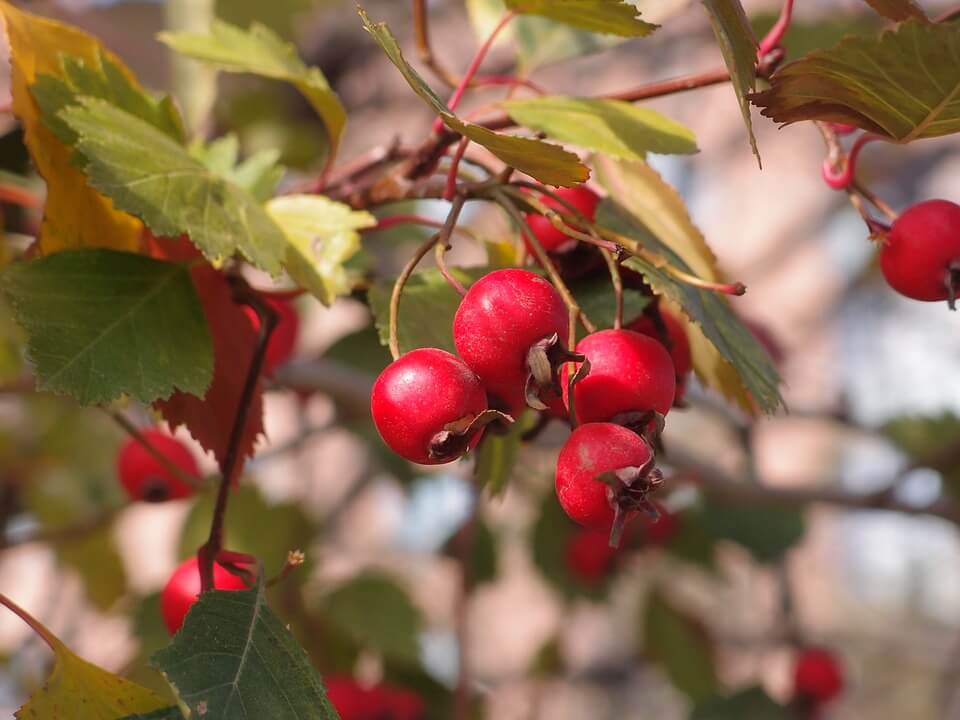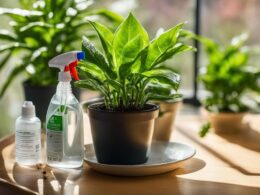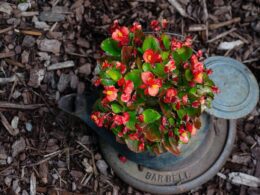Are you a sage plant owner who wants to ensure the health and longevity of your herb? Knowing how often to water sage is crucial in maintaining its well-being. Proper watering practices are essential for sage plants to thrive.
By understanding the watering requirements specific to your sage plant, you can provide it with the care it needs to flourish.
Consider the climate and season when determining the frequency of watering your sage plant. Sage plants prefer a dry climate, so it’s important not to overwater them. Balancing the right amount of water is key to prevent the risk of root rot or dehydration.
Proper drainage is another crucial aspect to keep in mind. Without adequate drainage, excess water can accumulate and cause root damage. By ensuring your sage plant is potted in a container with drain holes, you can help prevent water-related issues.
Stay tuned for more information on watering techniques, signs of overwatering or underwatering, and additional tips for caring for your sage plant. With the right knowledge, you can keep your sage plant thriving and enjoy the benefits of this wonderful herb.
Quick Summary
- Sage plants prefer a dry climate and should not be overwatered.
- Water sage plants deeply but infrequently to encourage root growth.
- On average, sage plants require watering once every 7-10 days.
- Signs of distress include wilting leaves and a droopy appearance.
Understand the Watering Requirements of Sage Plants
To keep your sage plants healthy and thriving, you’ll need to understand how often you should water them. Sage plants are drought-tolerant, which means they can survive in dry conditions. However, they still require regular watering to maintain optimal moisture levels.
When it comes to creating a watering schedule for your sage plants, it’s important to strike a balance. Overwatering can lead to root rot and other diseases, while underwatering can cause the plant to wither and die. The best approach is to water your sage plants deeply but infrequently. This allows the roots to absorb the moisture and encourages their growth.
To determine when your sage plants need watering, check the soil moisture. Stick your finger about an inch into the soil near the base of the plant. If it feels dry at that depth, it’s time to water. On average, sage plants require watering once every 7-10 days, depending on the weather conditions and the type of soil.
Remember, it’s always better to underwater than overwater your sage plants. They can tolerate dry conditions better than excessive moisture. By understanding their watering requirements and following a proper watering schedule, you can ensure that your sage plants remain healthy and thrive in your garden.
Consider the Climate and Season
Depending on where you live and the time of year, you’ll want to adjust how frequently you give your sage plant a drink. It’s important to consider the climate and season when determining the watering schedule for your sage.
Here are some watering guidelines to keep in mind:
-
Assess the weather conditions: Take into account the temperature and humidity levels in your area. During hot and dry summers, your sage plant may require more frequent watering to prevent it from drying out. On the other hand, during cooler months or in regions with higher humidity, you can reduce the watering frequency.
-
Monitor the soil moisture: Sage plants prefer well-draining soil, so it’s crucial not to overwater them. Before reaching for the watering can, check the top inch of soil. If it feels dry, it’s time to water. However, if it’s still moist, hold off on watering for a few more days.
-
Observe the plant’s appearance: Sage plants will show signs of distress if they are not receiving enough water. Look for wilting leaves or a droopy appearance, as these are indications that your sage plant is thirsty.
By following these watering guidelines and adjusting the watering schedule based on your climate and season, you can ensure the health and vitality of your sage plant. Remember, it’s better to underwater than to overwater, as sage plants are quite resilient and can tolerate drought conditions. Happy gardening!
Watering Frequency for Established Sage Plants
If you live in a region with hot and dry summers, you’ll need to adjust the watering schedule for your established sage plants to ensure they don’t dry out. Sage plants are quite hardy and can tolerate some drought, but they still need regular watering to stay healthy. The key is to find the right balance and avoid overwatering, which can lead to root rot.
To determine the watering schedule for your sage plants, you should consider the climate and season. In hot and dry climates, you’ll need to water your sage more frequently, especially during the summer months. Aim to water your sage plants deeply once or twice a week, making sure the water reaches the root zone. This will help the plants establish a strong root system and withstand periods of drought.
However, it’s important not to water your sage plants too frequently, as this can lead to waterlogged soil and root rot. Before watering, check the soil moisture by sticking your finger about an inch deep into the soil. If it feels dry at that depth, it’s time to water. If it still feels slightly moist, you can wait a day or two before watering again.
By adjusting your watering schedule based on the climate and season, you can ensure that your established sage plants receive the right amount of water to thrive and avoid drying out. Remember, it’s better to underwater than overwater, so always err on the side of caution.
Importance of Proper Drainage
Proper drainage is crucial to prevent root rot and ensure the health of your established sage plants. When it comes to watering your sage, it’s not just about how often you water, but also about the soil composition and the effects of poor drainage.
Sage plants prefer well-draining soil, as they’re susceptible to root rot if the soil becomes waterlogged. This is why it’s important to choose a pot or planting location with good drainage.
When the soil doesn’t drain properly, excess water can accumulate around the roots, leading to root rot. This can cause the roots to become weak and susceptible to diseases. Additionally, poor drainage can also result in the lack of oxygen reaching the roots, which can hinder their growth and overall health.
By ensuring proper drainage, you can prevent these issues and maintain the safety of your sage plants.
To promote good drainage, you can add organic matter, such as compost or peat moss, to the soil. This will help improve its structure and water-holding capacity. Additionally, you can use well-draining containers or raise the planting area to allow excess water to flow away from the roots.
By paying attention to the importance of proper drainage, you can keep your established sage plants thriving and free from the dangers of root rot.
What is the Proper Watering Schedule for Different Herbs?
Knowing the proper watering oregano plants frequency is essential in maintaining healthy herbs. Different herbs have different moisture needs. For most herbs, watering them once or twice a week is adequate. However, it is crucial to monitor the specific requirements of each herb and adjust accordingly to ensure optimal growth and development. By adhering to the proper watering schedule, you can help your herbs thrive and enhance their aroma and flavor in your culinary endeavors.
Signs of Overwatering or Underwatering
Feeling like you’re playing a game of guessing, it can be tough to tell if you’re giving your sage plants too much or too little water. But fear not, as there are common mistakes to avoid and signs to look out for when it comes to watering your sage.
Overwatering is a big no-no, as it can lead to root rot and the eventual death of your plant. Signs of overwatering include yellowing leaves, wilting, and a musty smell coming from the soil.
On the other hand, underwatering can cause wilting, dry and brittle leaves, and a droopy appearance. To revive a wilting sage plant, the first step is to assess the watering situation. If you suspect overwatering, allow the soil to dry out before watering again. If underwatering is the issue, water the plant thoroughly and make sure the excess water drains out properly.
Remember to always provide your sage plants with well-draining soil and pots with drainage holes to prevent waterlogged roots. By following these simple guidelines, you can ensure the proper watering of your sage and keep it healthy and thriving.
Watering Techniques for Container-Grown Sage
If you want to keep your sage plant healthy and thriving, it’s important to know how often to water it. In the previous subtopic, we discussed the signs of overwatering or underwatering, which can be detrimental to the plant’s health. Now, let’s talk about the best watering techniques for container-grown sage.
When it comes to container-grown sage, the size of the container plays a crucial role in determining its watering needs. A larger container will hold more soil and retain moisture for a longer period, while a smaller container will dry out more quickly. Therefore, it’s essential to choose an appropriate container size for your sage plant.
In addition to container size, establishing a watering schedule is vital for the overall health of your sage. It’s recommended to water your sage deeply, allowing the water to penetrate the entire root ball. However, it’s equally important to avoid waterlogging the soil, as this can lead to root rot and other fungal diseases.
To help you visualize the watering needs of your sage plant, I have created a table below:
| Container Size | Watering Schedule |
|---|---|
| Small | Every 2-3 days |
| Medium | Every 3-4 days |
| Large | Every 4-5 days |
| Extra-large | Every 5-7 days |
By following these watering techniques and paying attention to the size of your container, you can ensure that your sage plant receives the right amount of water and thrives in its container.
Additional Tips for Sage Plant Care
To keep your potted sage plant thriving, here are some extra tips for taking care of it.
First, let’s talk about common mistakes to avoid. One of the most common mistakes people make with sage is overwatering. Remember, sage prefers well-draining soil, so make sure the pot has good drainage holes and avoid letting the soil become waterlogged.
Another mistake is not pruning the plant regularly. Pruning helps promote new growth and prevents the plant from becoming woody. It’s best to prune sage in the early spring, cutting back about one-third of the growth. This will keep the plant compact and encourage more flavorful leaves.
Now let’s move on to pruning techniques. When pruning your sage plant, make sure to use sharp, clean pruning shears. Start by removing any dead or damaged branches, cutting them back to the main stem. Next, trim back any long, leggy branches to maintain a bushy shape. Lastly, remove any flower stalks as they appear, as this will redirect the plant’s energy towards leaf production.
By avoiding common mistakes and practicing proper pruning techniques, you can ensure your potted sage plant stays healthy and productive.
Happy gardening!
Frequently Asked Questions
Can sage plants survive in dry climates with minimal water?
Yes, drought-tolerant sage varieties can survive in dry climates with minimal water. To conserve water in sage gardening, use mulch, provide shade, and water deeply but infrequently.
How do I know if my sage plant is being overwatered?
To prevent overwatering in your sage plant, look for signs such as yellowing leaves, wilting, or root rot. Make sure the soil is well-draining and only water when the top inch of soil is dry.
Are there any specific watering techniques for sage plants grown in containers?
To properly water sage plants grown in containers, make sure the soil is dry about 1-2 inches deep before watering. Water thoroughly until it drains from the bottom. Repeat this process when the soil feels dry again.
What are the signs of underwatering in sage plants?
Signs of dehydration in sage include wilted leaves, dry soil, and slow growth. To revive an underwatered sage plant, thoroughly water it until the soil is moist but not waterlogged. Monitor its moisture levels regularly.
Can sage plants be watered with tap water, or is it better to use filtered or rainwater?
It is better to water sage plants with filtered or rainwater instead of tap water. Filtered water removes impurities that can harm the plants, while rainwater provides natural nutrients. Using these options ensures the safety of your sage plants.
Conclusion
So remember, when it comes to watering your sage plants, it’s important to understand their specific needs. Consider the climate and season, and adjust your watering frequency accordingly.
Make sure to provide proper drainage to prevent overwatering. Keep an eye out for signs of overwatering or underwatering, and adjust your watering technique if necessary.
And if you’re growing sage in containers, be extra mindful of watering techniques.
By following these tips, you’ll be on your way to successfully caring for your sage plants. Happy gardening!









